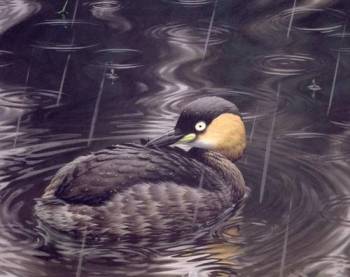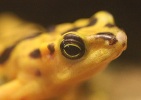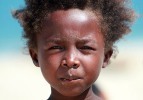World governments have missed their goal of stemming biodiversity loss by this year, instead biodiversity loss has worsened according to scientists and policy-makers, and a little rusty-colored bird, the Alaotra grebe (Tachybaptus rufolavatus) is perhaps a victim of this failure to prioritize biodiversity conservation.
Native to a small region in Madagascar, the grebe has been declared extinct by BirdLife International and the IUCN Red List due to several factors including the introduction of invasive carnivorous fish and the use of nylon gill-nets by local fishermen, which now cover much of the bird’s habitat, and are thought to have drowned diving grebes. The bird was also poached for food.
“No hope now remains for this species. It is another example of how human actions can have unforeseen consequences”, said Dr. Leon Bennun, BirdLife International’s Director of Science, Policy and Information. “Invasive alien species have caused extinctions around the globe and remain one of the major threats to birds and other biodiversity.”
 Illustration of the now extinct Alaotra grebe. Illustration by: Chris Rose. |
The last confirmed sighting of the Alaotra grebe was in 1985 on Lake Alaotra. Sightings continued into the late 1980s but the individuals may have been interbreeding with other grebes. Recent surveys found no grebes and, following a final expedition this year, the bird was moved to ‘extinct’.
Only one photograph of the bird is known, and unfortunately for posterity it is blurry. Given its rarity, scientists knew little of the species before it vanished. Small wings likely made it incapable of flying far beyond its habitat; it fed on fish; and was usually spotted in pairs. Nothing is known of its breeding ecology or rearing habits.
A recent study has found that freshwater species—like the Alaotra grebe—worldwide are more widely threatened than either land or marine species.
“Wetlands are fragile environments, easily disturbed or polluted, but essential not only for birds and other biodiversity but also for millions of people around the world as a source of water and food,” explains Dr. Stuart Butchart, BirdLife International’s Global Research and Indicators Coordinator.
The Alaotra grebe is the third grebe to vanish in forty years, and the 132nd bird species to vanish since 1600, although it is likely birds unknown to science also went extinct during that time.
To date 1,240 birds are threatened with extinction according to the IUCN Red List, which added 25 species to the list since last year.
On its website, BirdLife International asked the public whether or not they cared if the Alaotra grebe went extinct given that the species was rare, little-known, and barely studied.
“Yes, I care,” wrote one respondent named ‘Harry’, “grebes are one of my favorite families of birds. A day when you see a grebe is a day which is not completely wasted. And now there’s one less kind in the world. One less source of joy.”
Twenty species of grebes—freshwater diving birds—remain; five are threatened with extinction.
Related articles
Gone: a look at extinction over the past decade

(01/03/2010) No one can say with any certainty how many species went extinct from 2000-2009. Because no one knows if the world’s species number 3 million or 30 million, it is impossible to guess how many known species—let alone unknown—may have vanished recently. Species in tropical forests and the world’s oceans are notoriously under-surveyed leaving gaping holes where species can vanish taking all of their secrets—even knowledge of their existence—with them.
Collapsing biodiversity is a ‘wake-up call for humanity’
(05/10/2010) A joint report released today by the Convention on Biological Diversity (CBD) and the UN Environment Program (UNEP) finds that our natural support systems are on the verge of collapsing unless radical changes are made to preserve the world’s biodiversity. Executive Secretary of the Convention on Biological Diversity, Ahmed Djoghlaf, called the bleak report “a wake-up call for humanity.”
Despite promises, world governments failing to save biodiversity
(04/29/2010) In 2002 world leaders committed to reducing the global rate of biodiversity loss within eight years time: 2010. While many have noted that world governments have largely failed on their promises, a new study in Science looks at the situation empirically and agrees that their has been no significant reduction in biodiversity loss and, at the same time, pressures on the world’s species have risen, not fallen.

World failing on every environmental issue: an op-ed for Earth Day
(04/22/2010) The biodiversity crisis, the climate crisis, the deforestation crisis: we are living in an age when environmental issues have moved from regional problems to global ones. A generation or two before ours and one might speak of saving the beauty of Northern California; conserving a single species—say the white rhino—from extinction; or preserving an ecological region like the Amazon. That was a different age. Today we speak of preserving world biodiversity, of saving the ‘lungs of the planet’, of mitigating global climate change. No longer are humans over-reaching in just one region, but we are overreaching the whole planet, stretching ecological systems to a breaking point. While we are aware of the issues that threaten the well-being of life on this planet, including our own, how are we progressing on solutions?